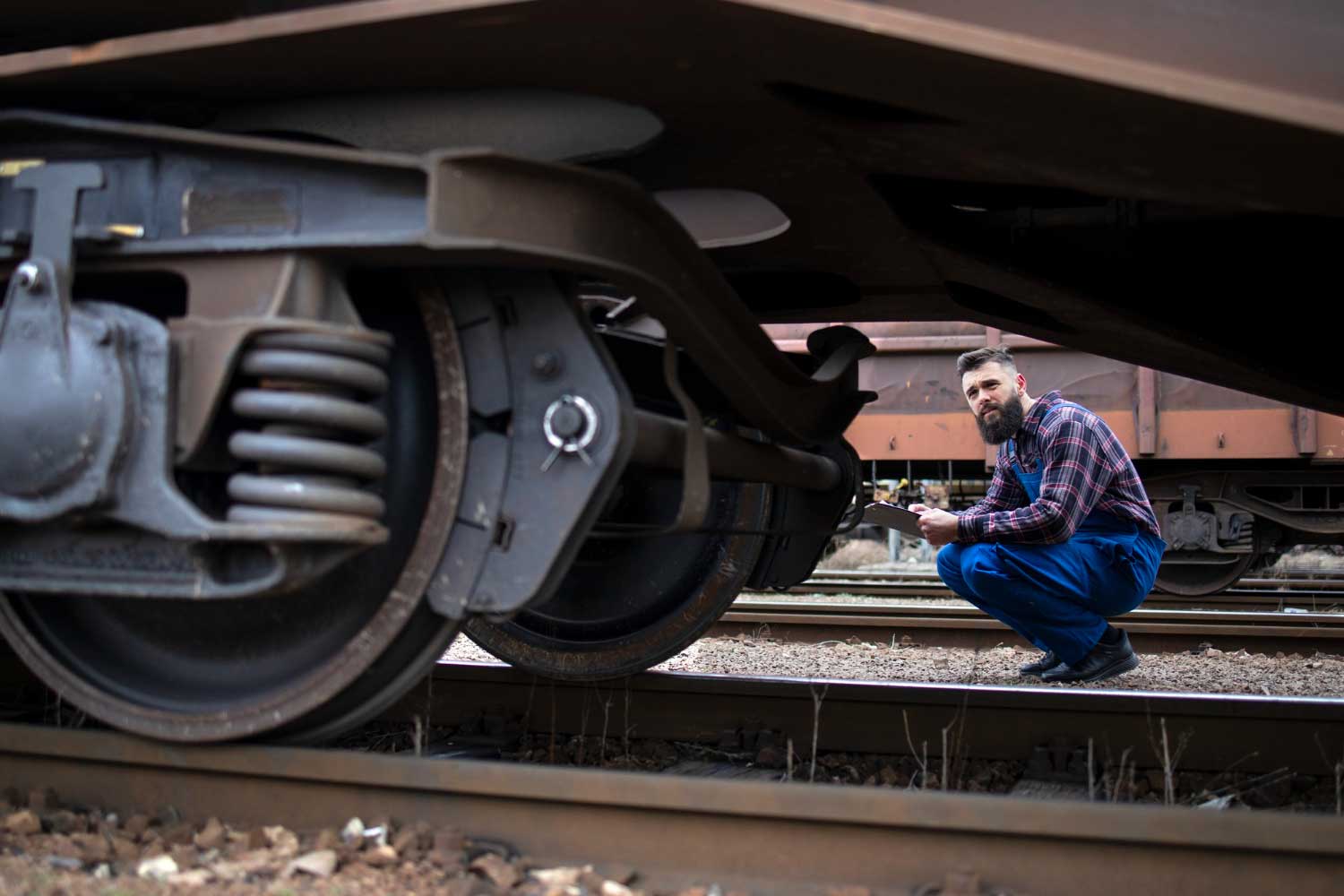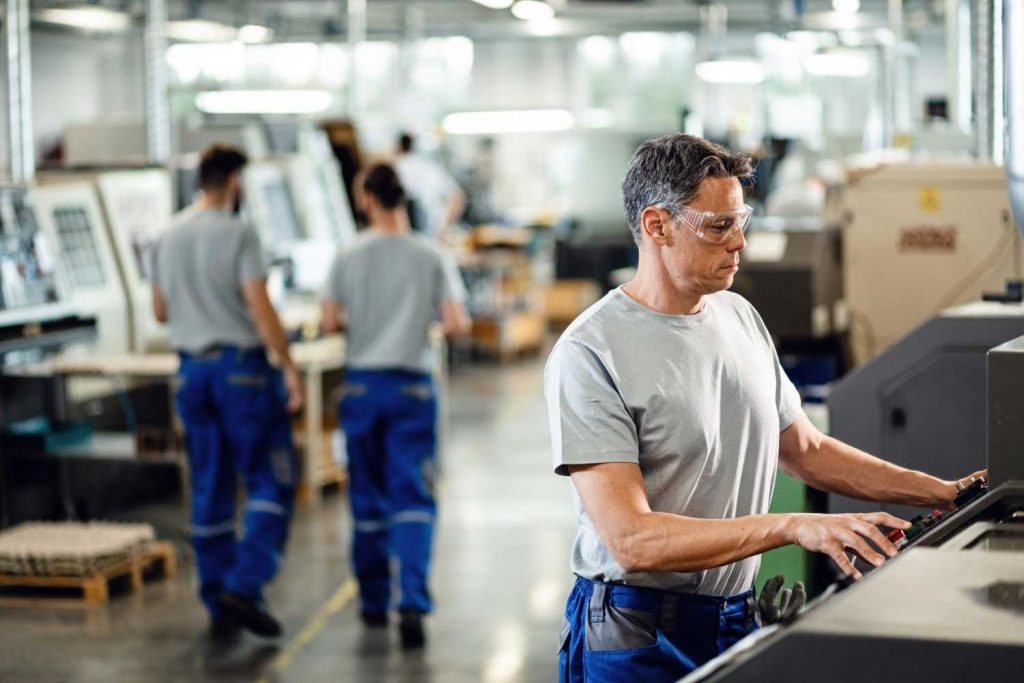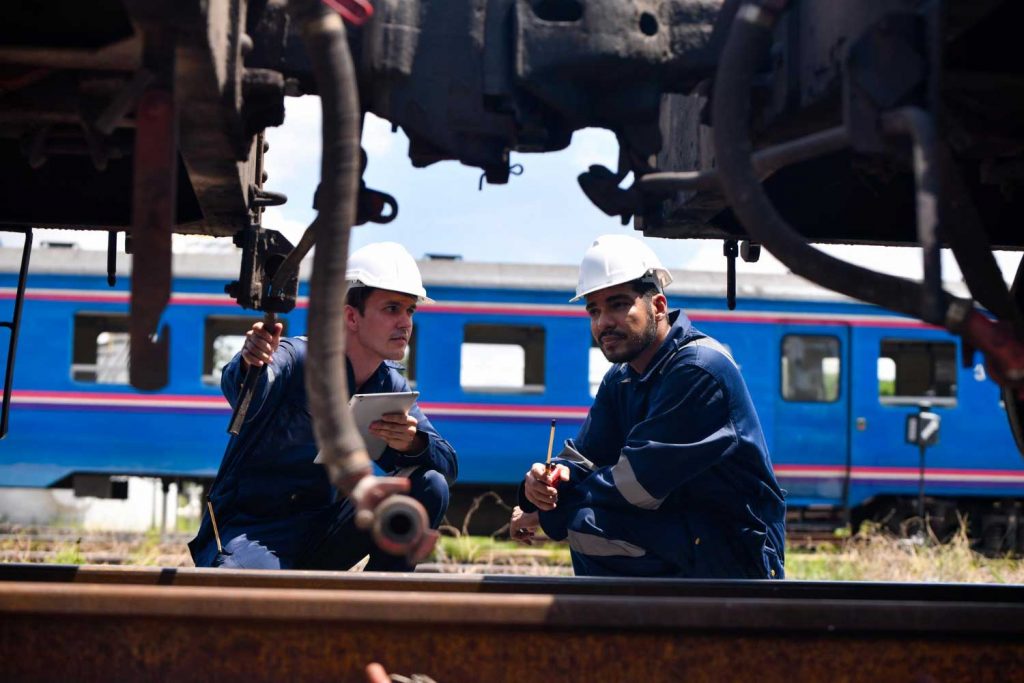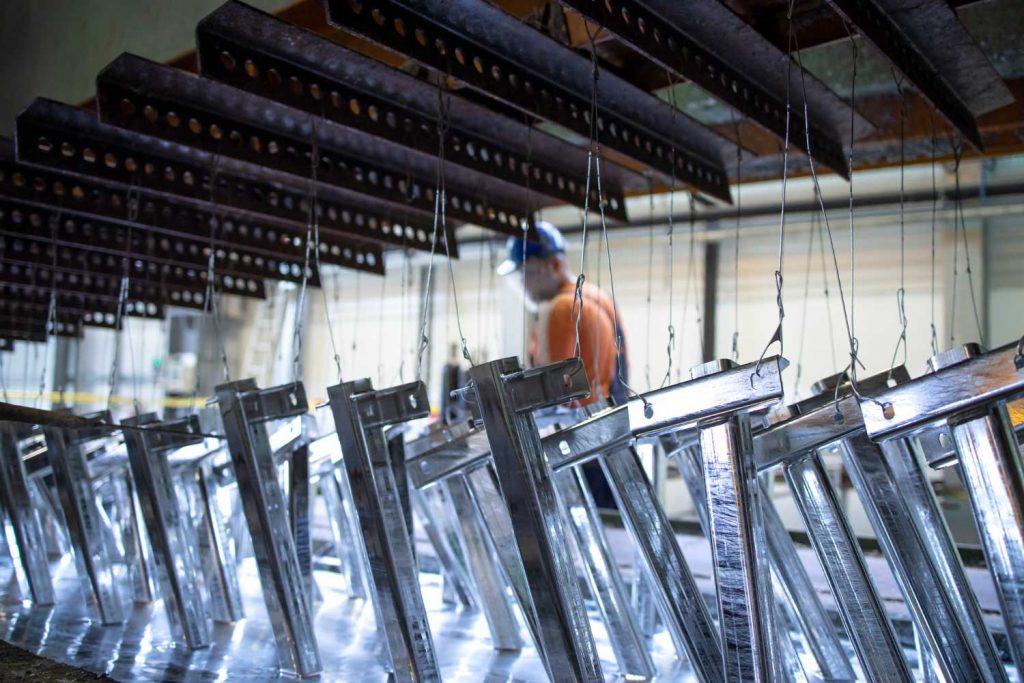Making mobility safe is a task that Knorr-Bremse devotes itself to every day. The systems produced by the long-established Munich-based company safely brake streetcars, metros, locomotives, multiple units, freight cars and high-speed trains. In terms of production safety and quality, however, the manufacturer has picked up speed: A worker guidance system uses visualized work instructions to support the assembly of different types of braking systems, thus ensuring an optimum, uniform workflow in the work process.
Screwdriving processes in particular place high demands on quality in the production of heavily stressed components. Torques, rotation angles, tightening parameters or the use of the correct tools for the respective screw are precisely defined so that the respective component corresponds to the defined target condition. Such specifications for optimum processing of braking systems are of course indispensable in rail transport. It is therefore in the interest of the manufacturer to ensure one hundred percent quality already in the production process. Furthermore, these processes must be precisely defined and monitored in order to be able to prove to customers that they have been properly processed at any time. However, a wide variety of brake systems for different train models, shapes and sizes also places high demands on production, which must constantly adapt to new workflows.
Work steps visualized individually
With the introduction of the Production Guideline (PG) solution from the software company CSP GmbH & Co. KG, the challenges outlined above have now been successfully solved at Knorr-Bremse. The application at the Munich site uses images to support the worker step by step in assembling the components. For this purpose, a sequence of images is displayed on a screen that visualizes the order of the individual activities. At various points in the work process, the employee must also confirm certain information or work instructions before the next process step can take place. The data from production and the manually confirmed information are then stored together in an automated database and thus serve as legally valid proof of product quality. For this purpose, PG also takes all available data that the production plant itself can record, evaluates it and completes the data inventory in this way. In this way, the production process is comprehensively and completely documented. The systems from Atlas Copco and Saltus that KnorrBremse has been using for a long time can be easily connected to PG via interfaces.
The project took around two years until the high-quality solution was put into operation at Knorr-Bremse with numerous additional developments and adaptations. Previously, the company had already developed its own software, which was used to automatically store production data in tables at these specialized bolting workstations. However, the workers were still instructed for the respective brake system on a paper basis. The demands on the new worker guidance system were correspondingly high: For example, a wide range of variants and a large number of bolting types had to be supported – more than 200 different parameters are decisive at Knorr-Bremse. Another specific internal quality requirement was a batch scan of the product before it is used. Last but not least, the project team had wishes regarding the user interface of PG. Some of the programming was also changed in the course of the project.
Work with plant management is well accepted
Project manager Johannes Zizler, who is responsible for work preparation at Knorr-Bremse, believes that the company is in a better strategic position today than it was before: “Today, the use of PG gives us one hundred percent certainty that the defined process is being adhered to. In the event of a complaint, for example, we could prove in detail how precisely and faultlessly the bolting work was carried out. The advantage is that we have practically no training effort for this, with the exception of the introduction to the use of the visualization software itself.” In total, about 40 employees work with PG in the bolting shop. Initial reservations about the new solution on the part of the employees were quickly overcome. In the meantime, even the less computer-savvy workers have become accustomed to working with the modern software. Especially the training of the employees in new processes is very efficient today. Among other things, PG also supports the nut selectors used at Knorr-Bremse: Flashing lights visually indicate to the worker which tool must be used for certain work steps. Correct removal is recognized and only then is the specific bolting operation released.
However, it is not only the work in production itself that has changed, but above all the work preparation. For the specific variants of braking systems for which the workers are instructed with PG, the corresponding images must be provided in advance. Usually, the work preparation department creates these photorealistic images using a CAD system. CAD drawings have one advantage over ‘normal’ photos: they are very high-contrast and can be perceived very well by the human eye. The images are loaded into PG and the corresponding bolting points are marked. The other details that are important for the screwdriving process are also set up separately, such as the torque or information on which work step, for example, a screw is to be greased.
High effort pays off
The largest sequence of images Knorr-Bremse presents to workers in PG is around 100 images for approximately 350 work steps. The relatively high effort is rewarded with the highest quality of bolting – although it is not used with every braking system. Knorr-Bremse plans to use the Worker guide for all variants of braking systems that are manufactured in large quantities – from several hundred units per year. About 2,000 of the most common brake systems are produced per year. In addition, the work process is also supported with PG whenever customers of the manufacturer explicitly request written proof of the bolting process for certain products.
As soon as a product is fully assembled and the result is marked as “OK”, all data from the production process is documented. All work steps and usually between ten and 15 parameters are recorded here by PG. Furthermore, the torque, angle, time and the respective worker are recorded. The data is sent to the SAP system via a PDF protocol, which is generated automatically. In addition, Knorr-Bremse always has a further quality assurance measure in place: every braking system produced is tested for functionality on a test rig by simulating the possible cases that could occur in a train. Even in the event of the slightest deviations, the product is immediately readjusted.
Due to the good experience with the plant management, it is currently planned to expand the cooperation with CSP. In the future, PG will also be available for other process steps. These include processes such as greasing and gluing. Among other things, special light barriers will be used here to segment individual work steps. There are also plans to extend PG to other locations and to improve and document product quality in Russia and China, for example, with the help of plant management. Johannes Zizler sums up: “For Knorr-Bremse it is incredibly important to guarantee the highest quality. The damage that could be caused by a faulty braking system could easily run into millions. So investing in such sophisticated plant management for quality assurance pays off very quickly.”
Profile Knorr-Bremse Systems
Knorr-Bremse Systems is one of the leading manufacturers of braking and on-board systems for rail vehicles. In addition to complete braking systems for rail vehicles, the product range also includes door systems, HVAC systems, control components and windshield wipers. With production, sales and service sites, the division is represented in 27 countries around the globe. In 2011, Knorr-Bremse Systems generated sales of EUR 2.19 billion. The company employs over 11,000 people. The Knorr-Bremse Group is headquartered in Munich.





